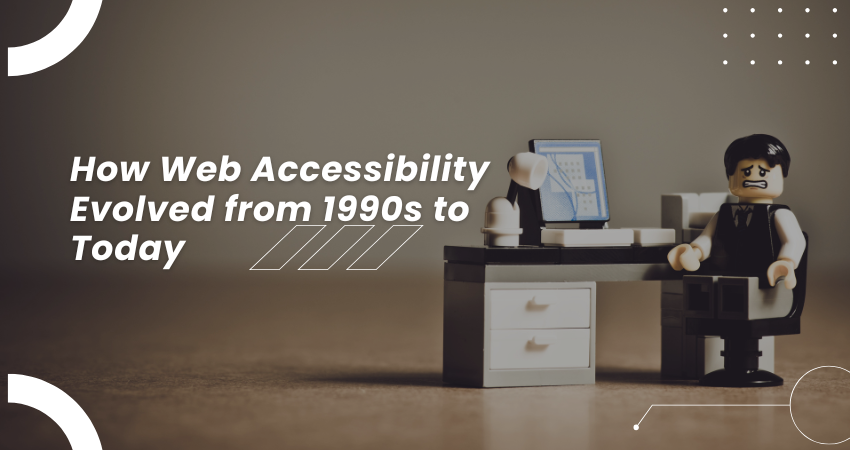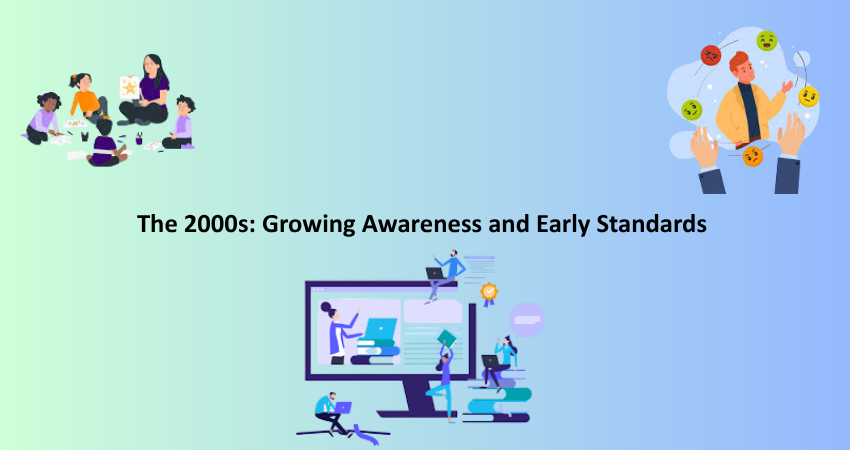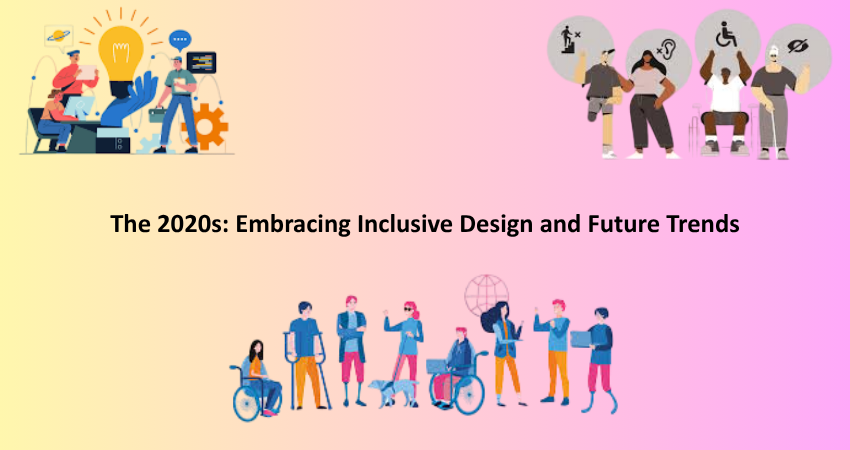
Introduction
As with many things, the course of web accessibility has been something of a metamorphosis, ranging from an barely acknowledged concept in the 1990s to one of the major tenets of digital design and development today. In the beginning days of the internet, very few websites were text-heavy, static, and no consideration whatsoever was given to any user with a sort of disability. Designers and developers hopped over functions and curiosities somewhat past the frontiers of accessibility, conscripting many designers to the inaccessible experience. Yet, with the growing complexity of what stood in the way of World Wide Web communication and purchasing and learning, usable web work for others gained very serious attention.
This development has been influenced by technological advances, legal principles, advocacy efforts, and increasingly greater comprehension of inclusive design. Some milestones that have made such a big impact on how the websites are constructed and experienced include the establishment of the Web Content Accessibility Guidelines (WCAG), landmark legal cases, and innovations in assistive technologies. Accessibility is now, besides “best practice”, a requirement for reaching wider audiences and international standard compliance. The present article discusses the evolution of web accessibility from its early roots to the present stage, the key changes, challenges, and opportunities in an era.
The 1990s: Birth of the Web and Limited Accessibility Awareness
Early Web Design and Minimal Consideration for Disabilities
The 1990s was a time when the World Wide Web was a platform you were yet to experiment with. Sites were set up with basic HTML, with insufficient attention given to design, navigation structure, and content hierarchy. Multimedia elements were rare, and most sites relied heavily on text. But this low-tech approach did not make it any easier to navigate those sites. Developers and content creators back then either did not know or had only limited knowledge of how users with disabilities would access digital content. Very few tools were available for accessibility, and the concept of making the Internet inclusively accessible had not yet taken a root in the minds of the digital community.
As more and more users with various requirements went onto the Internet, the limitations of the early web began to unfold. For example, there would be insufficient structured headings, alt text for images, and logical reading orders for persons with visual impairments to navigate a page well. Similarly, the lack of keyboard navigation caused some hindrances to persons with motor impairments. Rarely were their grievances extremely prioritized without a larger conversation about what exactly digital access was. During this period, it was thought of, if at all, as an afterthought.
Emergence of Basic Assistive Technologies
When accessibility was still lacking in the web, the 1990s also marked the birth of some fundamental assistant technologies. It was in 1995 that JAWS software (Job Access with Speech) introduced an avenue for accessing digital content through speech output for visually impaired users; the early days of screen readers. These devices were a revolution in accessibility, but because of poor coding practices and their nonstandard HTML usage, they did not work well on most websites. Similarly, keyboard-only access began to make inroads, but there were very few sites designed for its effective use.
None of these conditions put an end to establishment of the first steps toward greater accessibility. Advocacy groups like the National Federation of the Blind and various disability rights organizations worked to promote access to digital spaces that would take into account every citizen’s needs. Change, however, was slow; change in public awareness still lay years in the future. The 1990s represent the foundations-it was the time in which accessibility started-but it was still pretty much in its rudimentary state through developing tools, technologies, and advocacy.
The 2000s: Growing Awareness and Early Standards

Introduction of WCAG and Global Guidelines
The 2000s marked the point of change in web accessibility largely led by the emergence of formal standards. The World Wide Web Consortium (W3C) published the first set of the Web Content Accessibility Guidelines (WCAG 1.0) in 1999, giving a framework for accessing web content. This has had priorities, for instance, developers were told to provide text alternatives for images or to properly allow use of the page without requiring a mouse. Though gradually adopted, WCAG at least gave developers a clear sense of the direction they ought to be taking to make websites that are truly inclusive.
The governments and institutions began using WCAG in their digital policy, which created the ground for possible litigation. In the United States, Section 508 of the Rehabilitation Act was amended in 2001 to cover electronic accessibility, while the United Kingdom imposed similar obligations under the Disability Discrimination Act (DDA). This legal evolution of accessibility increasingly made organizations view accessibility as one more issue of compliance, next to the issue of ethics. Hence, accessibility began to look like an issue by which everyone concerned would strive.
Improvements in Web Development Practices
In the 2000s, there was also a changing paradigm in web design and development. With the emergence of CSS and state-of-the-art scripting such as JavaScript, layout, interactivity, and responsiveness were starting to come under the deft hands of the developer. Intense yet exciting user experience; however, introduction of newer accessibility issues too. Complex menus, dynamic content, and AJAX create a difficult conundrum regarding assistive technologies and navigation for users with disabilities.
The response to these challenges took a turn toward strictly following structured coding practices consisting of semantic HTML and accessible patterns in design. Screen readers and similar tools were adapted simultaneously with the new web technologies, ARIA attributes were introduced by the W3C in the mid-2000s as a complementary way to improve accessibility in dynamic applications. Though implementation was still sporadic, this was certainly a big leap in the accessibility arena. There was a heightened awareness around these dates and with that, a conscious move toward bridging the gap in connecting all digital users.
The 2010s: Accessibility Enters the Mainstream
Mobile Accessibility and Responsive Design
New accessibility challenges arose with the rise of mobile devices as the main media through which people could access the internet. Mobile screens need adaptive layouts, touch interactions, and optimized performance. Unfortunately, many well-constructed websites were not optimized for mobile accessibility, leaving many users such as those who rely on voice input, use screen readers, or touch assistive technologies frustrated. In 2008, the release of WCAG 2.0, which continued to evolve into the 2010s, dealt with most of those items using testable success criteria and a broader focus on user context.
Responsive design was seen primarily as a means to enhance usability across an array of devices; however, challenges were also posed by its implementation. Media queries, liquid grids, and dynamic loading needed to be implemented very carefully lest they should break accessibility. The developers had to ensure that their interfaces could function with screen magnification, voice control, or one-handed operation. In spite of these complexities, the 2010s ushered in more co-working among designer, developer, and accessibility expert roles to achieve inclusive mobile experiences. More recently, accessibility APIs and settings became embedded into mobile operating systems like iOS and Android so that apps and websites can more easily meet user needs.
Legal Pressure and High-Profile Lawsuits
In the 2010s, courts have recognized accessibility as a matter of legal concern. The lawsuits that were brought against the companies Target, Netflix, and Domino’s Pizza were instructive in their bitter lessons on the consequences of having non-accessible websites. Courts regarded accessibility as an essential requirement under the Americans With Disabilities Act (ADA), thus setting the precedent for requiring such accessibility from companies. These lawsuits garnered considerable media attention and provoked widespread debate over digital inclusion.
These companies initiated some kind of accessibility audit for which they hired experts, bringing accessibility into their development processes. Platforms such as WordPress, Shopify, and Squarespace began offering accessibility-ready themes and tools. Moreover, organizations began to consider the mass market aspect of accessible design; inclusivity was considered not just the right thing to do but potentially profitable. The shift from reactive compliance to proactive inclusion was a tremendous cultural and operational shift across the tech industry.
The 2020s: Embracing Inclusive Design and Future Trends

WCAG 2.1, 2.2 and Toward WCAG 3.0
The accessibility date is continually progressing in this decade through newer standards from the very view of holistic, inclusive design. The release of WCAG 2.1 in 2018 as well as the soon drawn 2.2 are part of aiding low vision, mobile, and cognitive access considerations. However, WCAG 3.0 took some pause for draft as it wants to be more human-centered, more flexible, and easier to apply to different content types and devices: has a score system and focuses mostly on functional needs other than hard technical requirements.
And these are updated standards towards such a shift-from the all-out technical tenant ways to human-centered. They would then push designers and developers beyond compliance to think about how actual users interact with their content digitally. Today, accessibility is no longer a single person’s job; it is everyone’s responsibility-from content creators, UX designers, QA testers, and even executives. Collaboration, for sure, is made possible through accessibility training, certification, and community resources available to make it convenient for teams to build inclusive products from the ground up.
AI, Automation, and Next-Generation Tools
From the creation of a technology world, the future of web accessibility has always been determined by advancement in technology. Alt text can be automatically generated, tabulated contrast issues, and freely enabled keyboard navigation can be tested with AI and machine-learning technologies. Ease of access products like Microsoft’s Accessibility Insights, Google’s Lighthouse, and axe-core are now incorporated into the development workflows of yore. Such tools do not replace manual testing, but instead offer other valuable insight while speeding up time to resolution for the most common problems.
That being said, concerns remain about becoming too reliant on the tool. AI-generated alt texts are prone to context issues and misinterpretation, and automated checkers can simply miss subtle usability barriers. The future may prepare for an exciting juxtaposition of automation and human-centered design possessing empathy. With the rise of immersive experiences like augmented reality, virtual reality, and voice interfaces, it will be more critical than ever to ensure accessibility across these new mediums. The web accessibility evolution is still going on, and it is now entering the most interesting and impactful stage of its evolution.
Conclusion
From the 1990s to this very moment, the evolution of web accessibility dramatically changes how technology is perceived with inclusion and user experience. Indeed, it has travelled a long course, moving from an initial ignorance to having matured into a worldwide movement with standards, laws, technologies, and a passionate community that favors it. Each decade had its share of problems-for instance a very simple HTML content in the 1990s up until today’s very complicated yet dynamic web applications-but equally had solutions to push the envelope even further to what can be done in terms of accessibility.
Today, accessibility has advanced to more than just following statutory requirements. It involves designing with empathy, making products whose access cannot be restricted to certain individuals for purposes of technological advancement, and leaving no one behind as the society moves into the digital age. Going into the future, accessibility shall always remain in itself a continuing value that brings about innovation even more and leads to a more inclusive internet for generations ahead. For beginners: learning accessibility isn’t a technical skill but a lifestyle- a commitment to making the web better and equal for all.